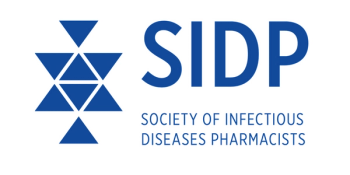
Prematurity Plus Lower Respiratory Tract Illness Carries Real Risks
Social and biological factors increase the risk of respiratory failure and death in vulnerable pre-term infants, a new study shows.
Prematurity is a risk factor for infant mortality. Everywhere in the world, babies—as well as children a few years older—born before 37 weeks of pregnancy have an elevated risk of death compared with full-term babies, with the risk rising the earlier the birth and the lower the birth weight. A new study examines the effects of
A team of investigators at Fundacion INFANT, an Argentinian organization devoted to examining respiratory illnesses in children, along with clinicians at hospitals in Buenos Aires, conducted a trial including 664 premature children less than 2 years old who lived in the local area. Between 2011 and 2013, the subjects had been readmitted to the hospital (after being hospitalized because of prematurity) due to severe LRTI symptoms such as coughing, wheezing, and rapid breathing as well as low oxygen-saturation levels.
Clinicians took secretions from each child and tested for
“This is, to our knowledge, the first large prospective study that gathered detailed socioeconomic, biologic, and clinical information from a large population of severely ill premature children from a vulnerable region,” Gaston Ofman, MD, FAAP, of the perinatal health division of Fundacion INFANT and an author of the study, told Contagion®. “Using clusters, or groups, we considered the interrelationship between variables with biological, social, and clinical interpretation in order to better target interventions.”
Among the variables that investigators found to have influenced the children’s’ development of LRTI was poverty and lack of parental education. A full 43% of the babies in the study had not completed their
The children also had biological vulnerabilities, including being underweight (54% of subjects with RF vs. 24% of those without), being younger than 6 months old (88% of those with RF vs. 62% of those without), having a mother who smoked during pregnancy (31% of those with RF vs. 22% of those without), never being breastfed (48% of those with RF vs. 27% of those without) and being male (65% of those with RF vs. 55% of those without). Clinical characteristics that raised the risk for RF included anemia, apnea, pneumonia, sepsis, and collapsed lung.
The investigators learned that, taken together, the factors most impactful when it came to the risk of RF were the mother’s incomplete education, being less than 6 months old, and being underweight. Being infected with RSV was associated with preterm mortality while hMPV was not associated with the death of any subject in the study, although Ofman noted that hMPV is not a lesser risk than RSV but is simply a much less common virus.
Although the study was conducted in a vulnerable area—and developing nations bear the brunt of premature infant deaths from RF compared with developed nations—the investigators are hopeful that the findings will resonate with clinicians worldwide. “[W]hen we see a patient arriving ill, we need to understand that that is the end result of interactions between the patient’s biologic background and his or her environment,” Ofman said. “Understanding the patient’s biologic and social history allows us to implement informed, meaningful public health interventions to prevent [poor] outcomes.”
The study was limited by the inclusion of only hospitalized RF patients and mortalities and not illnesses and deaths that occurred in the surrounding community. However, its strengths are its large size and inclusion of a wide variety of variables associated with illness and death over a period of 3 years.
Newsletter
Stay ahead of emerging infectious disease threats with expert insights and breaking research. Subscribe now to get updates delivered straight to your inbox.






























































































































































































































































































